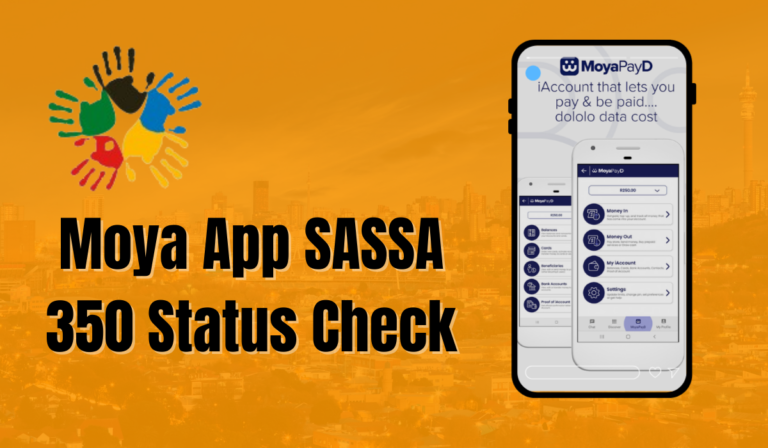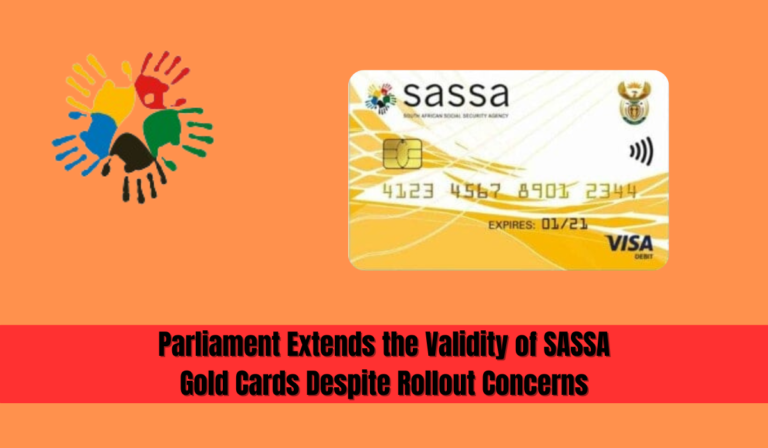Beneficiaries Select Bank SASSA Grant Payments Amid Gold Card Replacements

Beneficiaries Select Bank SASSA Grant Payments Amid Gold Card Replacements. As South Africa continues to modernize its social grant payment system, a major shift is happening in how recipients access their grants. Many beneficiaries are choosing to receive SASSA grant payments via bank accounts, rather than relying on traditional SASSA gold cards. The replacement of SASSA gold cards with the Postbank black card has sparked this change, leading to new trends in grant disbursement methods across the country.
In this article, we’ll dive deep into why this shift is happening, what the implications are for grant recipients, and how the new Postbank black card fits into South Africa’s broader social security strategy.
Why Are SASSA Grant Beneficiaries Switching to Bank Accounts?
The move away from the SASSA gold card comes at a critical time. The South African Social Security Agency (SASSA), in coordination with Postbank, has been working to replace gold cards with Postbank black cards that meet modern banking standards and include improved security features.
However, instead of upgrading to the black card, many beneficiaries are now choosing to have their grants paid directly into their bank accounts.
Reasons for the Switch
- Convenience – Recipients can use their existing bank accounts without needing to rely on a SASSA-issued card.
- Flexibility – Banks offer digital services like mobile apps, internet banking, and widespread ATMs.
- Avoiding Long Queues – Collecting or upgrading cards often means standing in long lines at SASSA or Postbank offices.
- Better Banking Features – Commercial banks may offer savings tools, debit cards, and loan options that SASSA cards do not.
Impact of the Gold Card Phase-Out
The SASSA gold card has been a familiar tool for more than 3 million grant recipients. But with this card now being phased out, the shift has created a ripple effect across the system.
Postbank Black Card: What You Need to Know
The Postbank black card is being introduced as the official replacement for the SASSA gold card. It offers:
- Enhanced chip-based security
- Compatibility with modern ATMs and banking systems
- Compliance with new banking regulations
Despite these features, uptake of the black card remains lower than expected.
Current Numbers
According to data shared in a National Council of Provinces meeting with the Select Committee on Social Services, the numbers below highlight how beneficiaries are transitioning from the gold card system.
Transition from SASSA Gold Card to Other Payment Methods
| Time Period | Description | Number of Recipients |
|---|---|---|
| January 2024 | Total Postbank recipients | 2.8 million |
| End of March 2024 | Recipients who upgraded to Postbank black card | 1.3 million |
| March 2024 | Recipients still using expiring SASSA gold cards | 1 million |
| By 20 March 2024 | Switched from Postbank to commercial banks | 567,000+ |
These numbers show a clear preference among many for direct bank account payments, signaling a significant trend.
Increased Pressure on SASSA Offices
The shift to commercial bank payments has not come without challenges. SASSA offices are under increasing pressure to assist the growing number of people who wish to change their SASSA grant payment method.
To manage this, SASSA extended working hours to accommodate applicants. However, the high volume of changes still means long wait times and significant administrative overhead.
What Beneficiaries Must Do:
- Visit a local SASSA office.
- Submit a bank confirmation letter.
- Provide ID and proof of address.
- Complete the bank account registration process with SASSA.
Deadline Looms: Validity of the SASSA Gold Card
Although the SASSA gold card remains valid until 31 March 2025, beneficiaries have only until the end of May 2024 to use them for grant payments. After that, the card will be obsolete for withdrawals and payments.
Important Notice:
- There will be no further extensions beyond May 2024.
- Beneficiaries who do not upgrade or switch to a bank account will not be able to access their grants.
SASSA has urged all recipients to act quickly to avoid disruption to their payments.
Why Switching to a Bank Account Makes Sense
More than half a million recipients have already opted for this method. Here’s why this switch is smart and secure:
Benefits of Receiving SASSA Grants via Bank Account:
- Security: Reduces the risk of card loss or fraud.
- Accessibility: Easy access through mobile banking and ATMs.
- Time-saving: No need to queue at SASSA offices or Postbank branches.
- Integration: Makes it easier to apply for other financial products (loans, insurance, etc.).
Challenges with the Postbank Black Card
While the Postbank black card is designed to be an improvement, it hasn’t been welcomed by all. Common issues reported include:
- Delays in issuing new cards
- Lack of awareness about where to collect them
- Concerns over service delivery at Postbank branches
These factors have driven some recipients to explore banking alternatives.
SASSA Response and Future Plans
To streamline the process, SASSA is investing in more staff, digital systems, and outreach programs to educate beneficiaries about their options. The agency is also working closely with banks to ensure a smooth transition.
Future Plans May Include:
- Introducing digital application options for payment method changes
- Partnerships with major banks for grant services
- Enhancing fraud detection and biometric security
Conclusion
The replacement of the SASSA gold card with the Postbank black card has unintentionally sparked a much-needed modernization in South Africa’s grant payment system. By giving recipients the option to receive SASSA grant payments via bank accounts, the country is taking a step toward a more accessible and secure welfare system.






